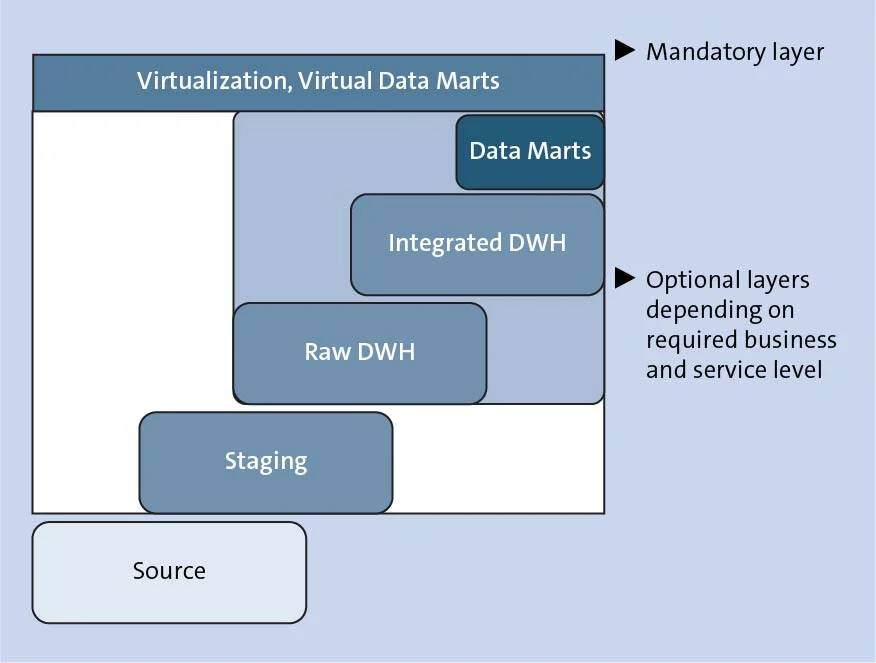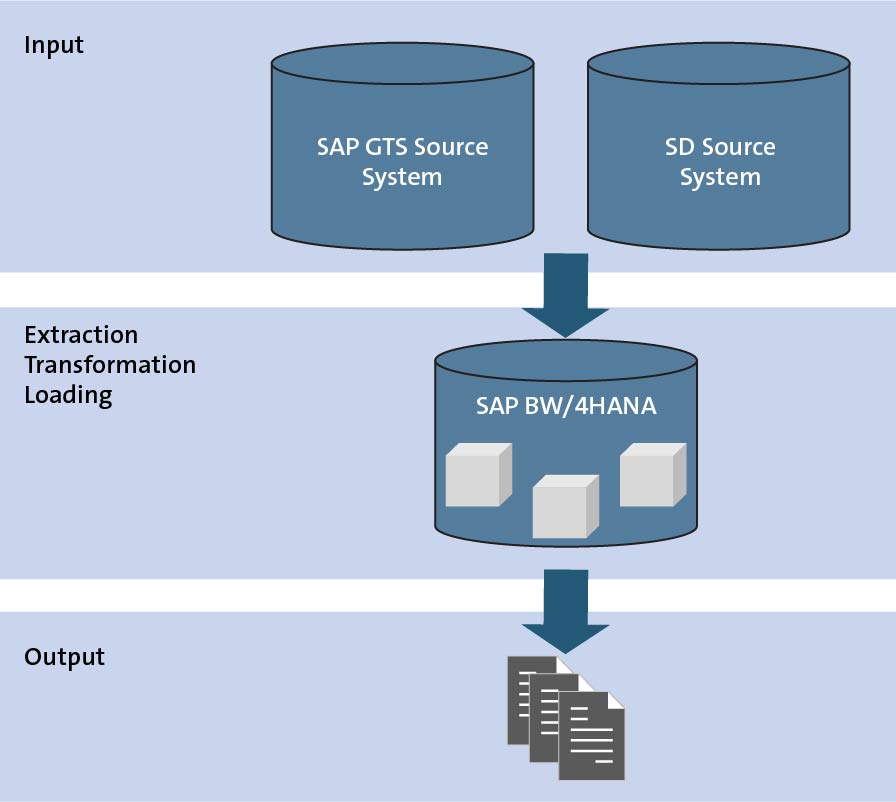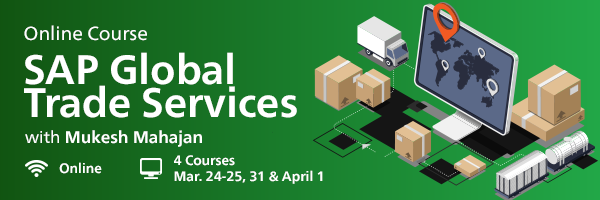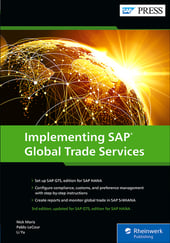SAP Business Warehouse for SAP HANA (SAP BW/4HANA) is the successor of SAP BW on SAP HANA. In comparison to SAP BW on SAP HANA, developments have started from a completely different codebase.
SAP BW/4HANA can be leveraged to harmonize and structure data from multiple
sources and systems into data models. It can handle data from SAP and non-SAP feeder systems. Not all data that SAP BW/4HANA can leverage needs to be stored in the database. After the data is ready for consumption, SAP BW/4HANA allows for fast and dynamic reporting.
The general architecture of a data model is based on the Layered and Scalable Architecture ++ (LSA++) from SAP. This architecture prescribes a general way of working that consists of mandatory and optional layers. The goal is to have a flexible architecture that is both scalable and reusable to minimize the total cost of ownership (TCO). The figure below depicts this approach.

The Virtualization layer is the only mandatory layer, and, as the name states, it doesn’t persist any data in the database. It also allows access to all of the layers beneath it. The reason behind this is to maintain a flexible approach. All the data that is needed for analytical reporting is consumed through this Virtualization layer.
If anything were to happen to the underlying data model or if any of the other layers were to change or disappear, this would not impact reports built on top of the virtualization layer.
All other layers in the LSA++ architecture are optional. It’s important to note that optional doesn’t mean unnecessary; it means that any of these layers have their use and advantages in a data warehouse approach, but that you have the freedom on how to tackle each data model that has to be developed.
To use SAP GTS data for analytical reporting, you need to integrate SAP GTS with SAP BW/4HANA. The integration between SAP GTS and SAP BW/4HANA can be established as part of their standard functionality. First, set up a remote function call (RFC) connection between SAP BW/4HANA and SAP GTS. Then, enable the data transfer from SAP GTS to SAP BW/4HANA via Customizing by activating the data transfer to SAP BW/4HANA on the FTO, document type, and item category levels.
The following figure shows the integration between SAP GTS and SAP BW/4HANA. As previously mentioned, SAP BW/4HANA can leverage data from both SAP and non-SAP systems.

The objects that enable data to be available for use in SAP BW/4HANA are called data sources. Data sources can make use of different technologies to extract data or virtualize data to SAP BW/4HANA. The following are the most common methods:
- Data extraction through views or function modules that have been created in the source SAP system and where the data will be persisted in SAP BW/4HANA
- SAP HANA views (i.e., all views from SAP HANA Live for SAP GTS)
- CDS views
In this blog post, we focus on the first method: extracting from SAP GTS to SAP BW/4HANA. Currently, this is the most efficient way to leverage data maintained in SAP GTS.
Note: The other methods (i.e., SAP HANA views and CDS views) can also play an important role, but as the provided content for SAP GTS doesn’t suit all scenarios, data extraction to the data warehouse is still highly recommended. One advantage to keep in mind is that any SAP HANA views or CDS views (i.e., that you would use or create for operational reporting) can also be used to create a data source for your data warehouse.
At a high level, data extraction from SAP GTS to SAP BW/4HANA works as follows. First, the SAP BW/4HANA system fetches the changed (i.e., delta) information from the data sources on a regular basis and combines the data from multiple SAP GTS tables to transform them into a specific format. As many SAP GTS tables contain globally unique identifiers (GUIDs) as unique keys, it’s important to review that the extractors don’t forward this information to your SAP BW/4HANA system to minimize complexity and storage costs.
After the data extraction is finalized and available in SAP BW/4HANA, the data can be transformed and enhanced based on the needed requirements for the analytics reporting. After this activity is completed, master data and transactional data is accessible in SAP BW/4HANA and allows for multidimensional analyses from various business perspectives. For example, you can access consolidated data from different modules (i.e., SAP GTS, SAP S/4HANA, etc.) via a single report.
The following sections cover more details on the extraction of data from SAP GTS.
SAP GTS Queries
When you’re setting up SAP BW/4HANA to integrate with SAP GTS, there are 22 standard queries with corresponding dataflows and extractors, as listed in the table below. Queries contain key figures, which are numeric values or quantities (e.g., net price or quantity) used in the output reports as objects for analysis. Queries relate to actual reports and specify what data is leveraged.

9
Reporting Options
The strength of the SAP BW/4HANA reports lies in their customizable nature. Analysts can continuously make modifications such as adding or removing variables and inserting metrics to analyze large sets of data. This allows users to make informed business decisions.
You can apply SAP BW/4HANA content in three ways:
- Without modifications: This option covers the basic reporting requirements—you activate the content and can use it as is.
- With modifications: This option entails changing delivered BI content by modifying the installed objects.
- Using BI content as a template to build further customized reporting: This is the most frequently used approach, in which you install the standard content and leverage the pieces that you need to comply with naming conventions, coding standards, and reporting requirements.
Advantages and Usage
SAP BW/4HANA offers several advantages for reporting:
- Users can make reports fit their business needs better by via customizations such as adding and removing variables and inserting filters. As such, valuable data may be filtered and extracted from large sets of transactional data.
- Data visualization through various frontend reporting tools (e.g., SAP Analysis for Microsoft Office, SAP Lumira, SAP Analytics Cloud) can help companies create insightful dashboards that showcase metrics tailored to different users.
- SAP BW/4HANA content contains a range of objects that simplify the implementation of an SAP BW/4HANA system and facilitate the development of an effective reporting system.
- When you use SAP BW/4HANA, you can combine data from various systems (i.e., SAP or non-SAP) into a single report. This removes the need to manually combine data from multiple systems into a spreadsheet because data from both SAP and non-SAP systems may be imported in SAP BW/4HANA.
Learn SAP GTS in Our Upcoming Rheinwerk Course!
Navigate volatile global supply chains with SAP GTS, edition for SAP HANA! Learn its architecture and configuration and dive into customs, compliance, and preference management to cover your global operations. Click on the banner below to learn more and order your ticket.
Editor’s note: This post has been adapted from a section of the book Implementing SAP Global Trade Services by Nick Moris, Pablo LeCour, and Li Yu.




Comments